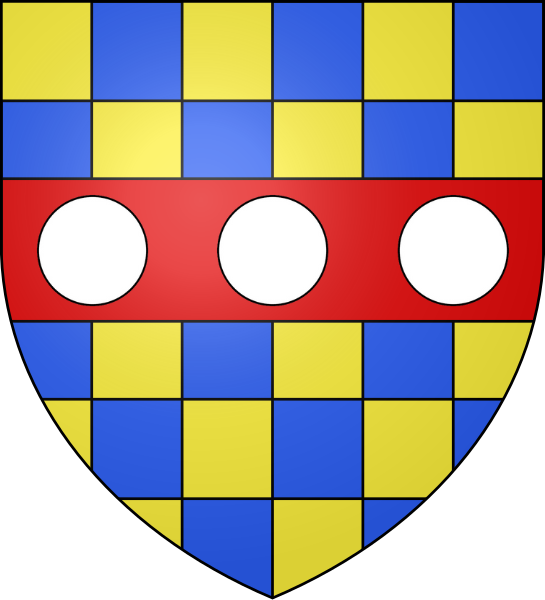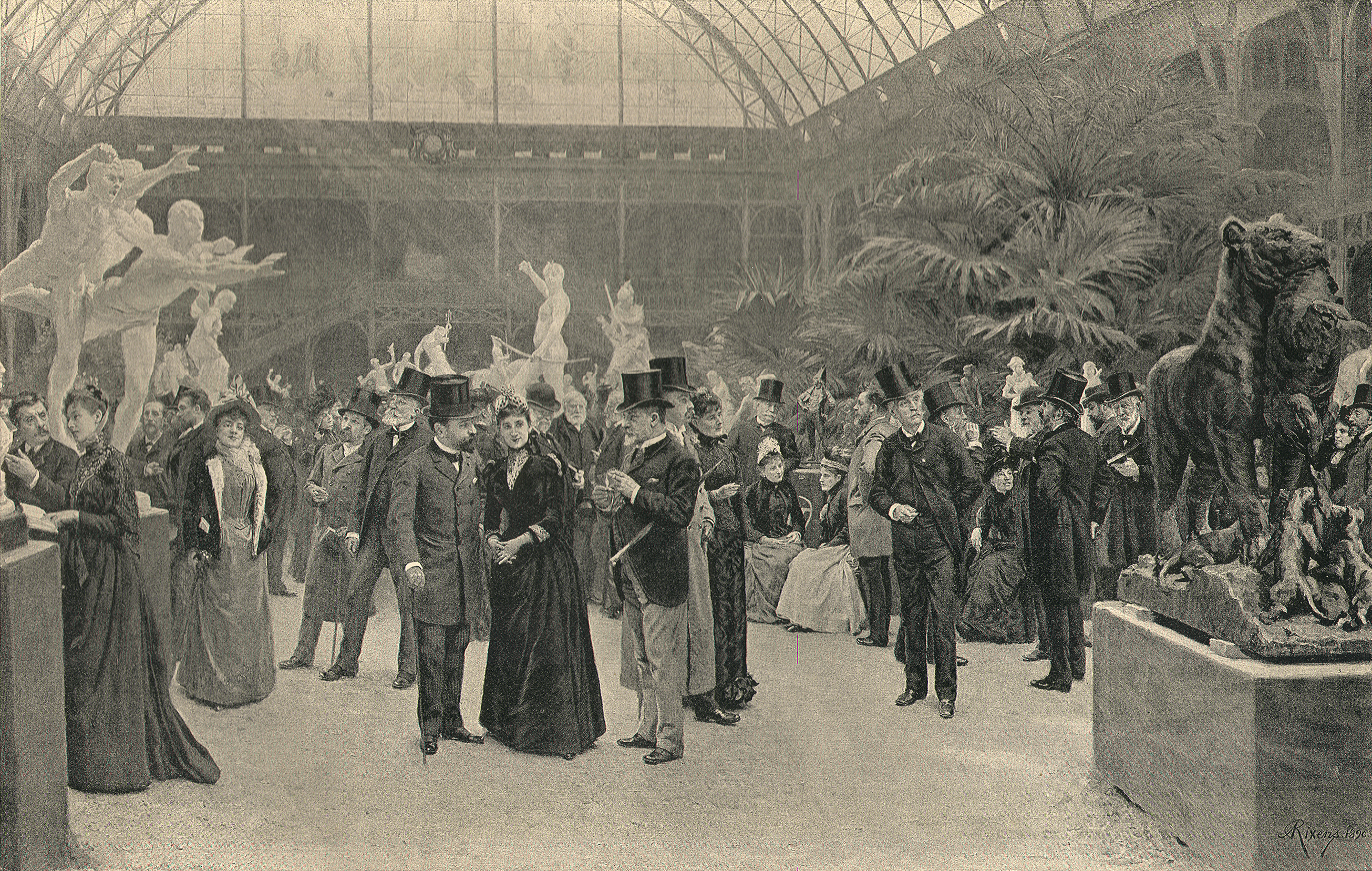|
Euphémie Muraton
Euphémie Muraton (née Duhanot; 1836–1914) was a French painter. Biography Muraton was born on 11 April 1836 in Beaugency. She married fellow painter (1824–1911) with whom she had one son, , also a painter. She exhibited at the Paris Salon from 1868 to 1913. Muraton exhibited her work in the Woman's Building at the 1893 World's Columbian Exposition The World's Columbian Exposition, also known as the Chicago World's Fair, was a world's fair held in Chicago from May 5 to October 31, 1893, to celebrate the 400th anniversary of Christopher Columbus's arrival in the New World in 1492. The ... in Chicago, Illinois. She died in 1914. Gallery Euphemie Muraton-Floral Still Life with Copper Saucepan.jpg, ''Floral Still Life with Copper Saucepan'' Euphemie Muraton-Nature morte aux pêches.jpg, ''Nature morte aux pêches'' Euphemie Muraton-Still Life with Spring Blooms in Glass Vases.jpg, ''Still Life with Spring Blooms in Glass Vases'' Euphémie Muraton - Thresher Scene - ... [...More Info...] [...Related Items...] OR: [Wikipedia] [Google] [Baidu] |
Painting
Painting is a Visual arts, visual art, which is characterized by the practice of applying paint, pigment, color or other medium to a solid surface (called "matrix" or "Support (art), support"). The medium is commonly applied to the base with a brush. Other implements, such as palette knives, sponges, airbrushes, the artist's fingers, or even a dripping technique that uses gravity may be used. One who produces paintings is called a painter. In art, the term "painting" describes both the act and the result of the action (the final work is called "a painting"). The support for paintings includes such surfaces as walls, paper, canvas, wood, glass, lacquer, pottery, leaf, copper and concrete, and the painting may incorporate other materials, in single or multiple form, including sand, clay, paper, cardboard, newspaper, plaster, gold leaf, and even entire objects. Painting is an important form of visual arts, visual art, bringing in elements such as drawing, Composition (visual art ... [...More Info...] [...Related Items...] OR: [Wikipedia] [Google] [Baidu] |
Beaugency
Beaugency () is a Communes of France, commune in the Loiret Departments of France, department, Centre-Val de Loire, north-central France. It is located on the Loire river, upriver (northeast) from Blois and downriver from Orléans. History Medieval Aaron ben Joseph of Beaugency and Eliezer of Beaugency were Bible commentators and Rabbinic literature, rabbinical scholars, who flourished in the twelfth century in the city. Lords of Beaugency The lords of Beaugency attained considerable importance in the 11th, 12th and 13th centuries; at the end of the 13th century they sold the fiefdom to the Crown. They were responsible for building Château de Beaugency, which as originally a wooden structure, later replaced with a stone one by Lancelin I de Beaugency, the first lord of Beaugency. The massive original keep is today a ruined shell, surrounded by a mansion built later on in the 14th century. The family that became the lords or Seigneurs of Beaugency started with Landry sore. H ... [...More Info...] [...Related Items...] OR: [Wikipedia] [Google] [Baidu] |
Salon (Paris)
The Salon (), or rarely Paris Salon (French: ''Salon de Paris'' ), beginning in 1667 was the official art exhibition of the in Paris. Between 1748 and 1890 it was arguably the greatest annual or biennial art event in the Western world. At the Salon of 1761, thirty-three painters, nine sculptors, and eleven engravers contributed. Levey, Michael. (1993) ''Painting and sculpture in France 1700–1789''. New Haven: Yale University Press, p. 3. From 1881 onward, it was managed by the Société des Artistes Français. Origins In 1667, the royally sanctioned French institution of art patronage, the (a division of the Académie des beaux-arts), held its first semi-public art exhibit at the Salon Carré. The Salon's original focus was the display of the work of recent graduates of the École des Beaux-Arts, which was created by Cardinal Mazarin, chief minister of France, in 1648. Exhibition at the Salon de Paris was essential for any artist to achieve success in France for at l ... [...More Info...] [...Related Items...] OR: [Wikipedia] [Google] [Baidu] |
List Of Women Artists Exhibited At The 1893 World's Columbian Exposition
Women artists competing for awards at the 1893 World's Columbian Exposition submitted their work to juries at appropriate buildings. Women artists were represented in the Museum of Science and Industry (Chicago), Palace of Fine Arts, along with their fellow countrymen. Women exhibited painting and sculpture throughout the Fair. The Woman's Building (Chicago), The Woman's Building did not have a juried exhibition, but lobbied to have artists of the day submit their work for the "Court of Honor". Women also contributed to the decoration and statuary throughout the Woman's Building. Women artists in the Palace of Fine Arts List of Women artist exhibiting at the Palace of Fine Arts, by country. Austria Belgium Canada Denmark France Germany Great Britain Holland Italy * Maria Martinetti – painting * Cora Slocomb di Brazza/Brazza Cooperative Lace Schools – lacemaking Norway Russia ;D * Maria Lvovna Dillon – sculpture ;K *Sophia Ivanovna Kramskay ... [...More Info...] [...Related Items...] OR: [Wikipedia] [Google] [Baidu] |
The Woman's Building (Chicago)
The Woman's Building was designed and built in June 1892, for the World's Columbian Exposition held in Chicago, Chicago, Illinois, United States in 1893; under the auspices of the Board of Lady Managers of the World's Columbian Commission, Board of Lady Managers. Out of the twelve main buildings for the Exhibition, the Woman's Building was the first to be completed. It had an exhibition space as well as an assembly room, a library, and a Hall of Honor. The ''History of the World's Fair'' states, "It will be a long time before such an aggregation of woman's work, as may now be seen in the Woman's Building, can be gathered from all parts of the world again." The purpose of the building was to highlight woman's achievements, and challenge the traditional ways of thinking at the time it was built. The Woman's Building was planned, designed, and decorated entirely by women under the direction of the board of lady managers. The building was demolished after the Fair. Building Througho ... [...More Info...] [...Related Items...] OR: [Wikipedia] [Google] [Baidu] |
World's Columbian Exposition
The World's Columbian Exposition, also known as the Chicago World's Fair, was a world's fair held in Chicago from May 5 to October 31, 1893, to celebrate the 400th anniversary of Christopher Columbus's arrival in the New World in 1492. The centerpiece of the Fair, held in Jackson Park, was a large water pool representing the voyage that Columbus took to the New World. Chicago won the right to host the fair over several competing cities, including New York City, Washington, D.C., and St. Louis. The exposition was an influential social and cultural event and had a profound effect on American architecture, the arts, American industrial optimism, and Chicago's image. The layout of the Chicago Columbian Exposition was predominantly designed by John Wellborn Root, Daniel Burnham, Frederick Law Olmsted, and Charles B. Atwood. It was the prototype of what Burnham and his colleagues thought a city should be. It was designed to follow Beaux-Arts principles of design, namely ne ... [...More Info...] [...Related Items...] OR: [Wikipedia] [Google] [Baidu] |
1836 Births
Events January–March * January 1 — Hill Street Academy is named Colombo Academy and acquired by the Government, establishing the first public school in Sri Lanka. * January 1 – Queen Maria II of Portugal marries Prince Ferdinand Augustus Francis Anthony of Saxe-Coburg-Gotha. * January 5 – Former U.S. Representative Davy Crockett of Tennessee arrives in Texas to join the Texan fight for independence from Mexico. * January 12 ** , with Charles Darwin on board, reaches Sydney. ** Will County, Illinois, is formed. * February 8 – London and Greenwich Railway opens its first section, the first railway in London, England. * February 23 – Texas Revolution: The Battle of the Alamo begins, with an American settler army surrounded by the Mexican Army, under Santa Anna. * February 25 – Samuel Colt receives a United States patent for the Colt revolver, the first revolving barrel multishot firearm. * March 1 – Texas Revolution – Convention of 1836: Delegate ... [...More Info...] [...Related Items...] OR: [Wikipedia] [Google] [Baidu] |
1914 Deaths
This year saw the beginning of what became known as the First World War, after Archduke Franz Ferdinand of Austria, heir to the Austrian throne was Assassination of Archduke Franz Ferdinand, assassinated by Serbian nationalist Gavrilo Princip. It also saw the first airline to provide scheduled regular commercial passenger services with heavier-than-air aircraft, with the St. Petersburg–Tampa Airboat Line. Events January * January 1 – The St. Petersburg–Tampa Airboat Line in the United States starts services between St. Petersburg, Florida, St. Petersburg and Tampa, Florida, becoming the first airline to provide scheduled regular commercial passenger services with heavier-than-air aircraft, with Tony Jannus (the first federally-licensed pilot) conveying passengers in a Benoist XIV flying boat. Abram C. Pheil, mayor of St. Petersburg, is the first airline passenger, and over 3,000 people witness the first departure. * January 11 **The Sakurajima volcano in Japan ... [...More Info...] [...Related Items...] OR: [Wikipedia] [Google] [Baidu] |
19th-century French Painters
The 19th century began on 1 January 1801 (represented by the Roman numerals MDCCCI), and ended on 31 December 1900 (MCM). It was the 9th century of the 2nd millennium. It was characterized by vast social upheaval. Slavery was Abolitionism, abolished in much of Europe and the Americas. The First Industrial Revolution, though it began in the late 18th century, expanded beyond its British homeland for the first time during the 19th century, particularly remaking the economies and societies of the Low Countries, France, the Rhineland, Northern Italy, and the Northeastern United States. A few decades later, the Second Industrial Revolution led to ever more massive urbanization and much higher levels of productivity, profit, and prosperity, a pattern that continued into the 20th century. The Catholic Church, in response to the growing influence and power of modernism, secularism and materialism, formed the First Vatican Council in the late 19th century to deal with such problems an ... [...More Info...] [...Related Items...] OR: [Wikipedia] [Google] [Baidu] |






